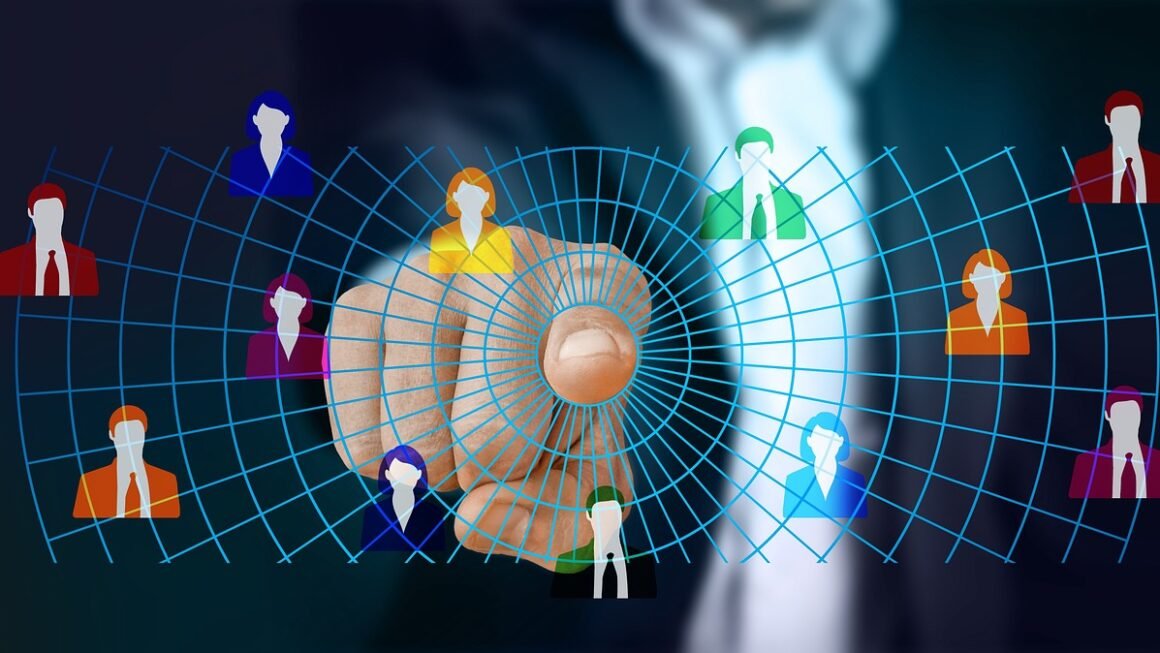Imagine a world where instant customer service, personalized recommendations, and effortless task automation are the norm. That world is rapidly becoming reality, powered by chatbots. These intelligent digital assistants are revolutionizing how businesses interact with customers, streamline operations, and gain valuable insights. But what exactly are chatbots, and how can they benefit your organization? Let’s dive in and explore the fascinating world of chatbot technology.
What are Chatbots?
Defining Chatbots: More Than Just Automated Responses
At their core, chatbots are computer programs designed to simulate conversation with human users, especially over the internet. They can understand and respond to text or voice input, providing information, answering questions, or performing tasks. However, chatbots are far more sophisticated than simple auto-responders. They employ natural language processing (NLP), machine learning (ML), and artificial intelligence (AI) to understand user intent and provide relevant, context-aware responses.
- Rule-based Chatbots: These chatbots follow a predefined set of rules and keywords to determine the appropriate response. They are relatively simple to implement but can struggle with complex or nuanced queries. Think of them as automated FAQs.
- AI-powered Chatbots: Leveraging NLP and ML, these chatbots can understand natural language, learn from interactions, and improve their accuracy over time. They can handle complex conversations, personalize responses, and even anticipate user needs. Examples include chatbots that can understand slang, different sentence structures, and even sarcasm to some extent.
The Evolution of Chatbots: From Basic Scripts to Intelligent Assistants
The journey of chatbots has been marked by significant advancements. Early chatbots were primarily script-based, relying on simple keyword recognition. Today, AI-powered chatbots offer a dynamic and personalized experience.
- Early Days: ELIZA, one of the earliest NLP programs, simulated a psychotherapist. It primarily rephrased the user’s statements as questions.
- Rise of Messaging Apps: The popularity of platforms like Facebook Messenger and WhatsApp has fueled the adoption of chatbots for customer service and engagement.
- AI Revolution: Advances in AI have enabled chatbots to understand complex language, personalize interactions, and learn from user behavior.
Benefits of Implementing Chatbots
Enhanced Customer Service: 24/7 Availability and Instant Responses
One of the primary benefits of chatbots is their ability to provide round-the-clock customer service. Unlike human agents, chatbots can operate 24/7, ensuring that customers receive immediate support regardless of the time zone or business hours.
- Reduced Waiting Times: Customers no longer have to wait on hold or send emails and wait for responses. Chatbots provide instant answers to common questions.
- Increased Customer Satisfaction: By providing quick and efficient support, chatbots can significantly improve customer satisfaction levels. According to recent studies, customers are increasingly preferring chatbots for quick support.
- Handling High Volumes: Chatbots can handle a large volume of inquiries simultaneously, preventing overload during peak hours.
Streamlined Operations: Automating Repetitive Tasks
Chatbots can automate many repetitive tasks, freeing up human agents to focus on more complex issues. This can lead to increased efficiency and reduced operational costs.
- Lead Generation: Chatbots can qualify leads by asking targeted questions and collecting relevant information.
- Appointment Scheduling: Chatbots can automate the booking process, allowing customers to easily schedule appointments without needing to speak to a human agent. For example, a doctor’s office can use a chatbot to schedule appointments based on patient needs and doctor availability.
- Order Tracking: Chatbots can provide real-time order tracking information, allowing customers to monitor the status of their purchases.
Personalized Experiences: Tailoring Interactions to Individual Needs
AI-powered chatbots can analyze user data and preferences to deliver personalized experiences. This can lead to increased engagement and customer loyalty.
- Product Recommendations: Chatbots can recommend products or services based on a customer’s past purchases, browsing history, or expressed interests. A clothing retailer might suggest outfits based on a customer’s previous purchases and style preferences.
- Personalized Greetings: Chatbots can greet customers by name and remember their previous interactions.
- Targeted Offers: Chatbots can offer exclusive deals or promotions to specific customers based on their profile.
Implementing Chatbots: A Step-by-Step Guide
Defining Your Goals: What Do You Want to Achieve?
Before implementing a chatbot, it’s crucial to define your goals and objectives. What problems are you trying to solve? What tasks do you want the chatbot to automate?
- Improve Customer Service: Reduce waiting times, increase satisfaction, and handle a higher volume of inquiries.
- Generate Leads: Qualify leads, collect contact information, and nurture prospects.
- Increase Sales: Provide product recommendations, process orders, and offer customer support.
- Reduce Operational Costs: Automate repetitive tasks and free up human agents.
Choosing the Right Platform: Selecting the Best Fit for Your Needs
There are numerous chatbot platforms available, each with its own strengths and weaknesses. Choose a platform that aligns with your goals, technical capabilities, and budget.
- Popular Platforms: Dialogflow, Microsoft Bot Framework, Amazon Lex, Rasa.
- Considerations: Ease of use, integration capabilities, scalability, cost.
- No-Code Platforms: Platforms like Chatfuel and Botsify allow you to build basic chatbots without writing any code, using visual interfaces.
Training Your Chatbot: Ensuring Accuracy and Relevance
Training your chatbot is an ongoing process that involves providing it with data and feedback to improve its accuracy and relevance.
- Natural Language Understanding (NLU): Train your chatbot to understand different phrases and variations of the same intent.
- Contextual Awareness: Teach your chatbot to remember previous interactions and maintain context throughout the conversation.
- Continuous Improvement: Monitor chatbot performance, analyze user feedback, and update the chatbot’s knowledge base accordingly.
Best Practices for Chatbot Design
Conversational Flow: Creating a Natural Dialogue
Design your chatbot’s conversational flow to mimic a natural human conversation.
- Clear and Concise Language: Use simple language that is easy to understand.
- Personalized Tone: Tailor the chatbot’s tone to match your brand’s personality.
- Proactive Guidance: Guide users through the conversation by providing clear options and suggestions.
User Experience (UX): Ensuring a Seamless Interaction
Prioritize user experience to ensure that users find the chatbot helpful and easy to use.
- Intuitive Interface: Design an interface that is easy to navigate.
- Clear Visual Cues: Use visual cues to guide users through the conversation.
- Error Handling: Provide helpful error messages and guidance when users make mistakes.
Analytics and Reporting: Tracking Performance and Identifying Areas for Improvement
Monitor your chatbot’s performance to identify areas for improvement.
- Key Metrics: Track metrics such as user engagement, conversation completion rate, and customer satisfaction.
- User Feedback: Collect user feedback to identify areas where the chatbot can be improved.
- A/B Testing: Experiment with different chatbot designs and features to optimize performance. For instance, you can test different greetings or suggested responses.
Conclusion
Chatbots are transforming the way businesses interact with customers and automate tasks. By providing 24/7 support, streamlining operations, and delivering personalized experiences, chatbots can help businesses improve customer satisfaction, increase efficiency, and drive sales. As AI technology continues to evolve, chatbots are poised to become even more sophisticated and valuable assets for organizations of all sizes. Embracing chatbot technology is no longer a luxury, but a necessity for businesses looking to stay competitive in today’s digital landscape. The key to success lies in carefully planning your implementation, choosing the right platform, and continuously training and optimizing your chatbot to meet the evolving needs of your customers.



